Understanding Anodizing Dye Color
What is Anodizing Dye?
Dyes used in the metal anodizing process are used to imbue the substrate of the parts with a range of available colors. Different hues can be created by altering the concentration of the dye, based on the specific needs of the part being anodized. The eventual application of the part will influence the ideal type of dyes and anodized colors available.
Want to talk to one of our anodizing experts? Reach out to us today!
Types of Anodizing Dyes
There are both organic and inorganic dye options available for anodizing. Organic dyes are generally made from acids or mordents, while inorganic dyes are derived from inorganic salts from various metals like tin, nickel or cobalt sulfide. Both are widely used, the choice between the two options usually comes down to the anodized part’s eventual function.
Applications of Anodizing Dyes
Parts that are anodized and dyed are used in a wide range of industries and applications such as:
- Aerospace
- Firearms
- Marine
- Medical
- Military & Defense
Choosing the Right Dye
Factors to Consider
The ideal anodizing dye choice is determined by a number of factors, such as the environment that the parts will be used in, desired color, lightfastness and overall compatibility. For instance, it is recommended that parts that are exposed to regular UV light or harsh environments should be colored with inorganic dyes since they offer better resistance, lightfastness and stability in these conditions. On the other hand, if the brightness or a wider range of color options are more of a concern, organic dyes are more suitable.
INCERTEC offers a variety of anodizing dye colors, including:
- Black
- Blue
- Gold/Yellow
- Gray
- Green
- Olive Drab Green
- Orange
- Red
- Violet
Environmental Considerations
The anodized dyeing process is growing in popularity in part because it is an eco-friendly option for coloring parts while also improving their core characteristics. Anodizing dyes are low-toxicity and comply with environmental regulations, producing no hazardous waste throughout the process.
Preparation for Anodizing Dye
Cleaning and Pre-treatment
Before parts can be anodized and dyed, they must first be cleaned thoroughly. Degreasing removes any dirt or particulate on the surface, acid etching then creates a surface that is more conducive to the anodizing process and then a thorough rinse ensures that the surface of the metal is as clean as possible going into the next steps.
Masking and Racking
If the entire surface of the part is not going to be anodized, the masking step is used to cover and protect those areas. Masking allows for aesthetic flexibility and customization during the anodizing process, while also allowing specific areas to retain properties like conductivity after the anodizing is complete.
Racking serves a vital function in both the anodizing and dyeing steps. Racks hold the part or parts securely in place throughout the entire process, while also being the electrical current pathway during anodizing. There are a number of racking techniques that can be used depending on the material and overall requirements of the parts being anodized.
What Materials Can Be Anodized and Dyed?
Nonferrous metals — and their alloys — can be anodized. Aluminum is the most commonly anodized material, but titanium and magnesium are also viable options.
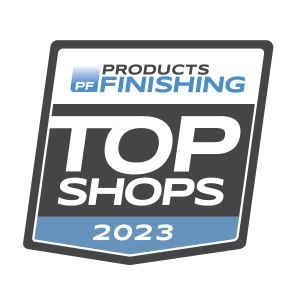
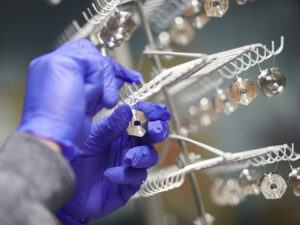

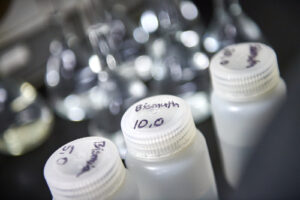 Whiskers – Whiskering is a phenomenon that causes metal filaments to occur on the surface of pure tin plating. Whiskers can appear soon after plating or take years to appear. These crystalline structures can be .0001 inch in diameter and can stretch 3/8 inch or longer, with the capacity to carry current. In the majority of applications, the growth of whiskers is not an issue. However, pure tin is not recommended for applications with low-voltage electrical equipment where items are closely spaced. As the whiskers can cause electrical shorts or current arcs and critical disruptions in the electronics. Underplates like nickel can help reduce the risk of whiskers or co-depositing the tin with a minimum of 2% lead or bismuth.
Whiskers – Whiskering is a phenomenon that causes metal filaments to occur on the surface of pure tin plating. Whiskers can appear soon after plating or take years to appear. These crystalline structures can be .0001 inch in diameter and can stretch 3/8 inch or longer, with the capacity to carry current. In the majority of applications, the growth of whiskers is not an issue. However, pure tin is not recommended for applications with low-voltage electrical equipment where items are closely spaced. As the whiskers can cause electrical shorts or current arcs and critical disruptions in the electronics. Underplates like nickel can help reduce the risk of whiskers or co-depositing the tin with a minimum of 2% lead or bismuth.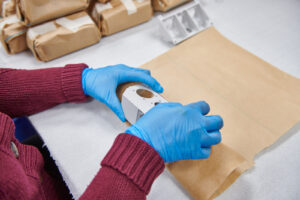 and storing tin-plated items. Tin oxide naturally occurs in a clean, dry atmosphere with continuous airflow, but the oxidation rate is very slow. If the tin is stored in a warm, humid environment with little airflow, the oxidation occurs at a much more rapid rate. A thick dull gray oxidation layer will form requiring the oxide to be broken through before successful soldering can occur. Using a resistance paper during packing or storage of a tin-plated part will help slow down the oxidation and mitigate tarnishing.
and storing tin-plated items. Tin oxide naturally occurs in a clean, dry atmosphere with continuous airflow, but the oxidation rate is very slow. If the tin is stored in a warm, humid environment with little airflow, the oxidation occurs at a much more rapid rate. A thick dull gray oxidation layer will form requiring the oxide to be broken through before successful soldering can occur. Using a resistance paper during packing or storage of a tin-plated part will help slow down the oxidation and mitigate tarnishing.

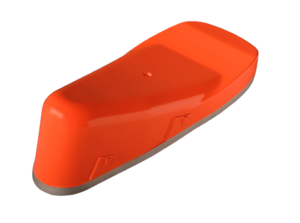 SELECTIVE PLATING
SELECTIVE PLATING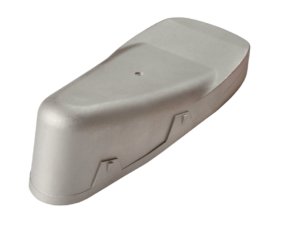 A PROCESS PROVEN
A PROCESS PROVEN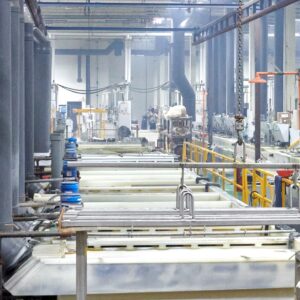
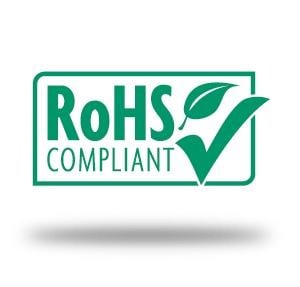 INCERTEC provides RoHS compliant finishes. The RoHS directive aims to restrict certain dangerous substances commonly used in electronic and electronic equipment. RoHS is also related to the Waste Electrical and Electronic Equipment (WEEE) Directive, developed as part of a legislative initiative to solve the problem of large amounts of toxic e-waste through setting the collection, recycling, and recovery targets for electrical goods.
INCERTEC provides RoHS compliant finishes. The RoHS directive aims to restrict certain dangerous substances commonly used in electronic and electronic equipment. RoHS is also related to the Waste Electrical and Electronic Equipment (WEEE) Directive, developed as part of a legislative initiative to solve the problem of large amounts of toxic e-waste through setting the collection, recycling, and recovery targets for electrical goods.